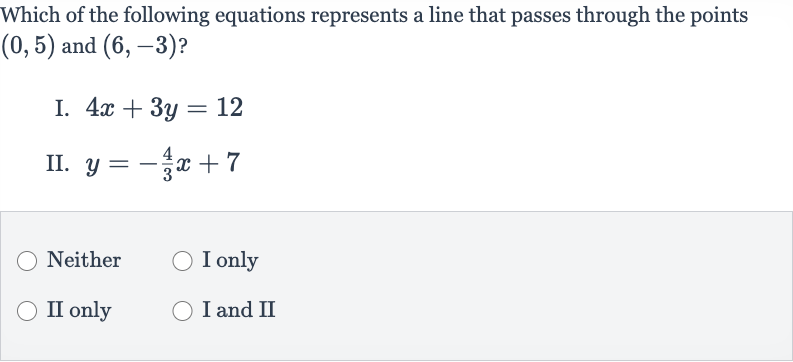Full solution
Q. Which of the following equations represents a line that passes through the points and ?I. II. NeitherI onlyII onlyI and II
- Calculate Slope: Find the slope of the line passing through the points and . The slope is calculated using the formula . Here, and . .
- Write Point-Slope Equation: Use the slope and one of the points to write the equation of the line in point-slope form.We can use the point and the slope .The point-slope form is .Substituting the values, we get .
- Convert to Slope-Intercept Form: Convert the point-slope form to slope-intercept form .Add to both sides to solve for ..
- Check Equation I: Check if equation I is the same line.To check, we need to convert this equation to slope-intercept form..This is not the same as , so equation I does not represent the line passing through the points and .
- Check Equation II: Check if equation II is the same line.Compare this equation with the one we derived .The slopes are the same, but the y-intercepts are different vs. .Therefore, equation II also does not represent the line passing through the points and .
More problems from Write a quadratic function from its x-intercepts and another point
QuestionGet tutor help
QuestionGet tutor help
QuestionGet tutor help
QuestionGet tutor help
QuestionGet tutor help
QuestionGet tutor help
QuestionGet tutor help
QuestionGet tutor help



